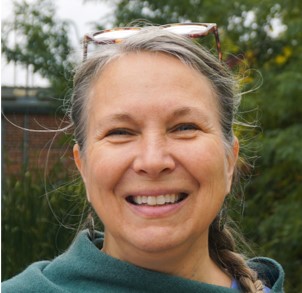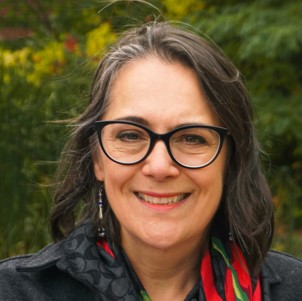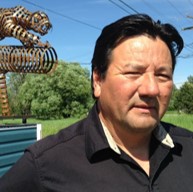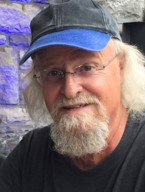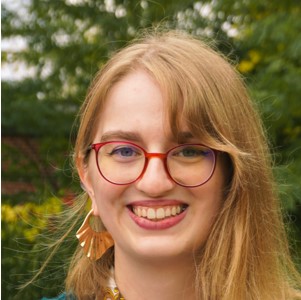Water is Medicine is a public artwork created by the art collective Dbaajmowin (story/narrative, Ojibwe Eastern and Odawa dialect) and supported by SpruceLab Inc. The work is located at Rotary Frenchman's Bay West.
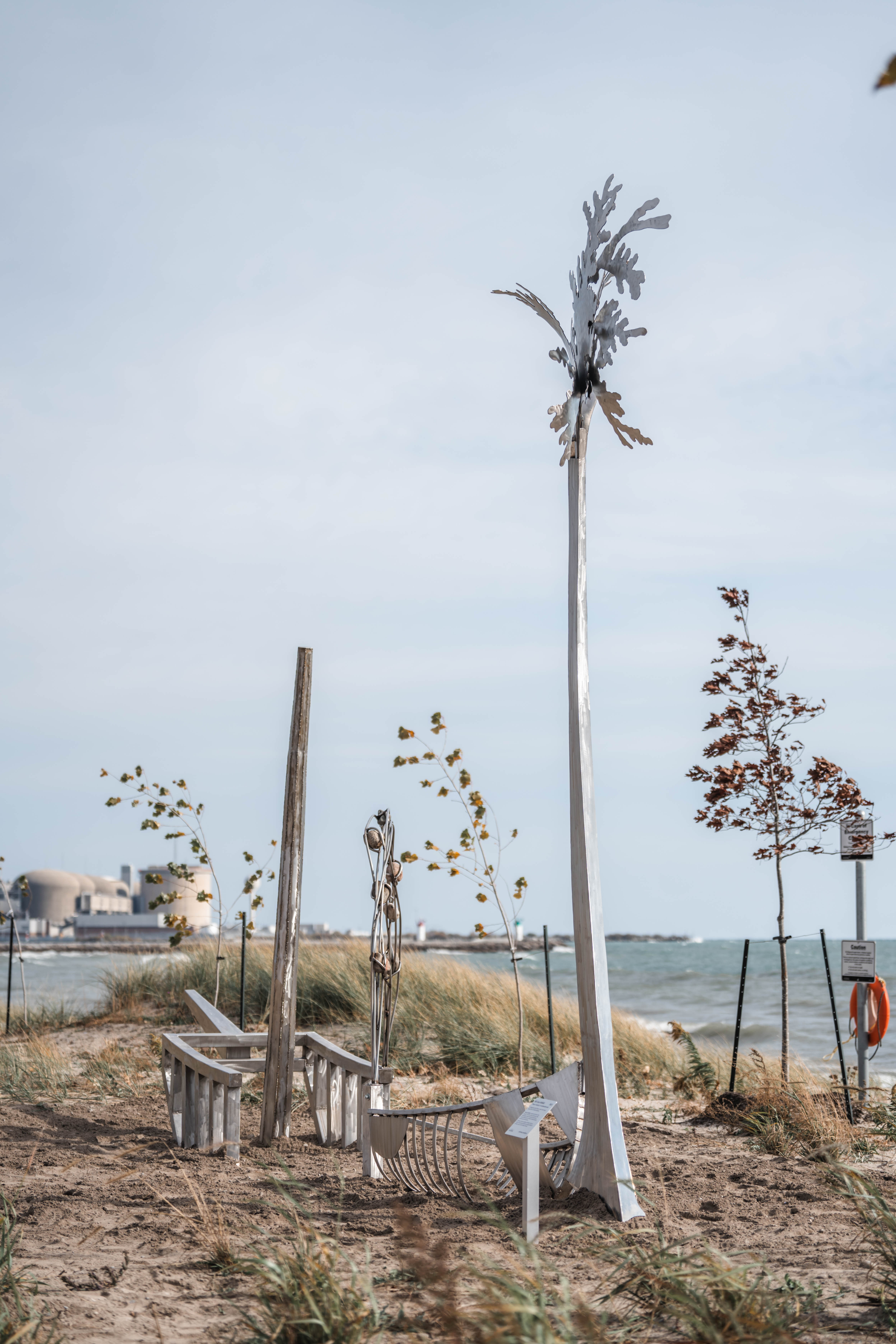
Image of the public artwork installed on November 3, 2023
Artwork Inspiration
Many thousands of years before the area was settled, the Michi Saagiig, the “People of the big river mouths” and the “Salmon people”, fished the area. They moved north for the winter hunting season and returned south to Lake Ontario’s shore for spring and summer. For the Michi Saagiig, the birchbark canoe is the connector to the natural world, used for transportation, harvesting foods such as wild rice, and to hunt and trap. This versatile and light-weight vessel can navigate long distances and all types of waterways, including wide-open lakes, streams and rapids. Canoe craftsmanship is based on Traditional motifs and meanings, and different prow and stern designs identified friendly or enemy nations. Building a canoe takes time and planning, and is rooted in the land and Ceremony. Birch, cedar, white pine, spruce gum, and water are typically used in the process, materials all found near the site.
Regarding settler cultural history, the hamlets and villages in the Pickering area were famous for their gristmills, sawmills, brickmaking and cooperage (manufacture of wood casks, barrels, buckets, and other containers made of timber staves). The earliest European settlement in the watershed was established in the 1770s and became known as Duffins Creek (later Pickering Village – now part of Ajax). Throughout the 19th century, the area now an agricultural hub and known for barley and wheat exports transported by ship to American breweries. Frenchman’s Bay was also home to a port that accommodated sailing ships moving from port to port on Lake Ontario as well as a commercial fishing centre. Stonehooking also became an economic driver for the area during the latter part of the 19th century. This activity was unique to the northern shores of Lake Ontario, and Frenchman’s Bay was home to a fleet of stonehooker schooners until the beginning of World War I. Schooners dotted the coastline as shale and rock boulders were mined from the water as raw materials to be shipped off to Toronto for building construction – an era which saw the rise of stone used by Scottish masons and the architectural Gothic Revival. The scow schooners were built with a flat, squared-off bow and stern to accommodate large cargo loads and sail in shallow waters. Stonehooking was done close to shore, typically between six and 12 feet of water. Schooners were anchored further out as the stonehookers pried the bedrock with long hooked rakes or winches, loading the stone slabs to barges which were then lifted onto the schooners for transport westward. Pickering’s maritime economy eventually declined as rail became the primary mode of transportation in the region.
About the Artwork
The design is inspired by the idea of ‘boat memories’ created of structural ribbing and structural forms of reflective, polished stainless steel, beached on a deposit of sand. The experience begins with the innovation of the Ojibwe birchbark canoe, used to navigated area waterways since time immemorial. A cedar tree is included as a tree and roots, hugging the canoe, emphasizing the close relationships of humans to nature (and cedar is an important Traditional medicine). It is also an essential element used in making this kind of canoe. Next, one discovers the form of a schooner, an innovation of early settlers to pull stones up from the bottom of the lake that contributed to the development of the area). The highly polished stainless steel symbolizes both innovation and reflecting on one’s place in history. Looking forward, the decommissioning of the Pickering nuclear plant will have a significant impact on the City, an industry that relies on water also. The hope is that together, these art installations will inspire visitors to see their images reflected in the pieces, and consider the idea of ‘respect’ and their own relationships with Water, the Land, and Indigenous Peoples.
The beautiful, vibrant stainless-steel structures also speaks to the strengths of the Peoples who have lived here since time immemorial, as well as the more recent industry of settler cultures. Civic scale projects offer a unique opportunity to respond to the Truth and Reconciliation Commission of Canada’s Call to Actions. Designed as an interpretive landscape for place-based learning, this project will help to increase awareness of the history of Indigenous Peoples. This also comes at a time where the reading of land acknowledgements are increasing, yet are typically read without really understanding their significance, or thinking about one’s personal responsibilities tied to benefiting from the Land and First Peoples that are being acknowledged. Together, the design concepts connect as a strong statement for visitors to situate themselves in the landscape and reflect on their place in time and responses to these learnings. It is important to take the time to further conversations about Indigenous placekeeping such as this with the Michi Saagiig Anishinaabeg Nations of Alderville, Curve Lake, Hiawatha, and Lake Scugog, to support the building of stronger relationships and understandings.
